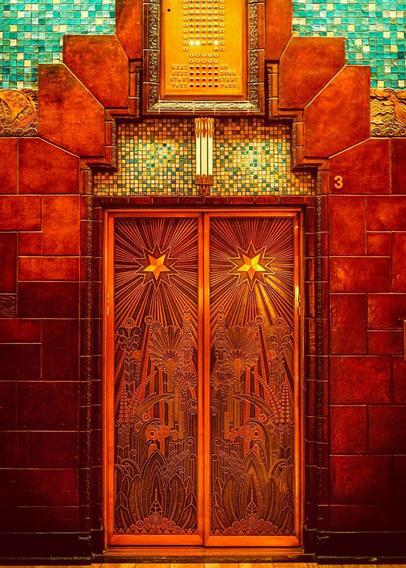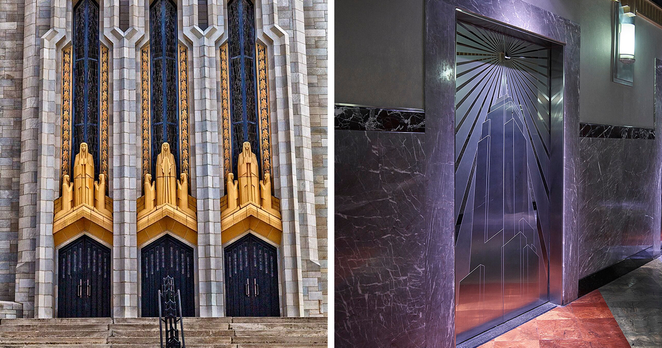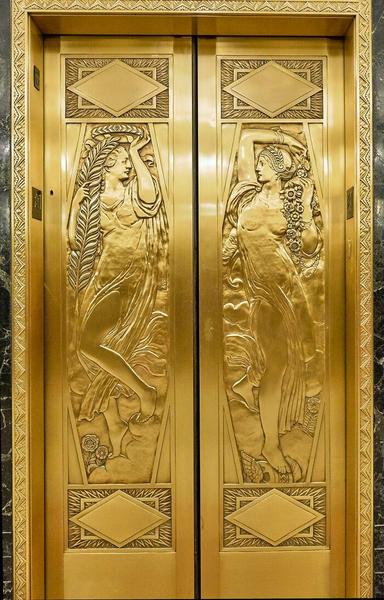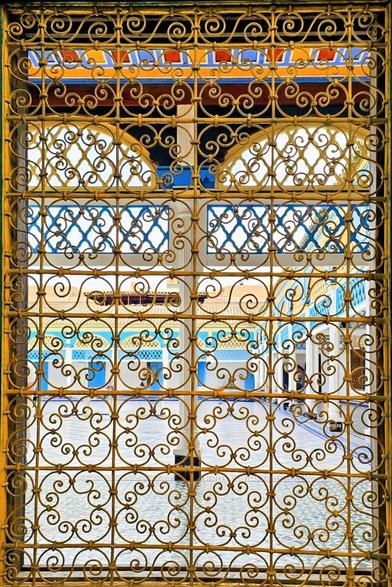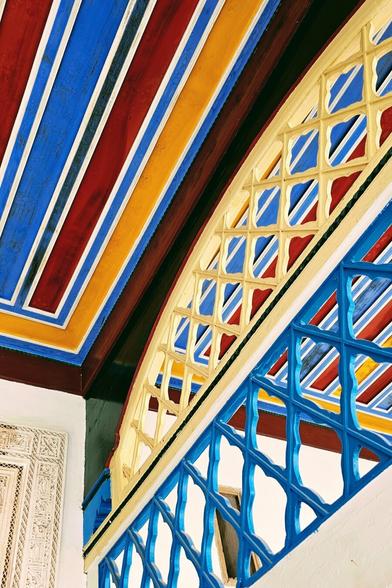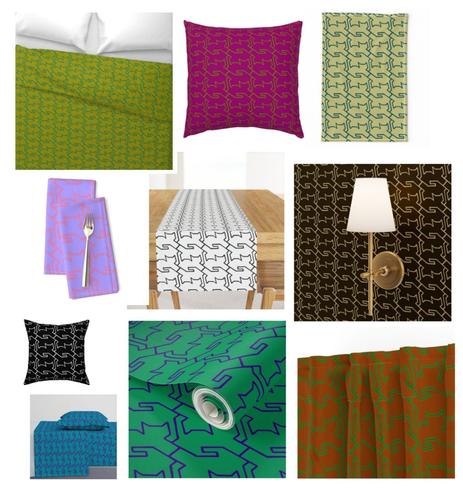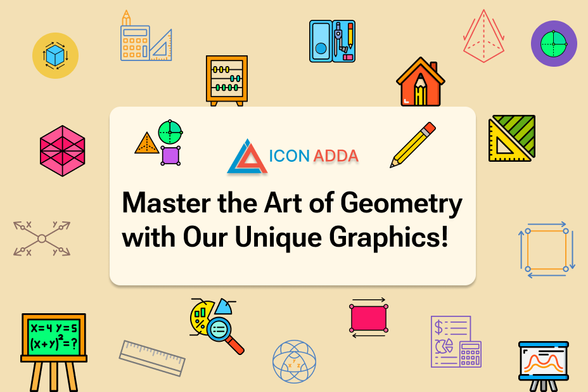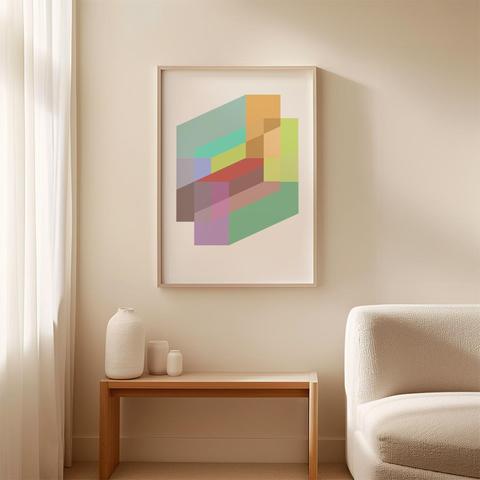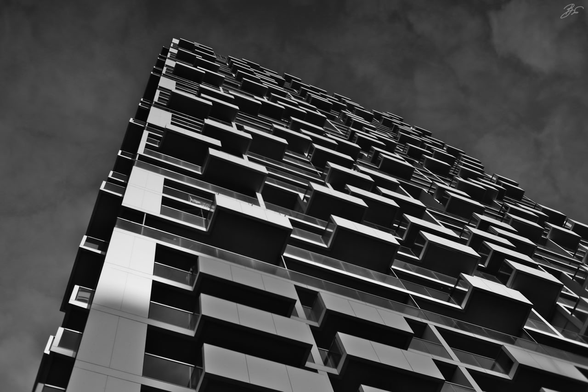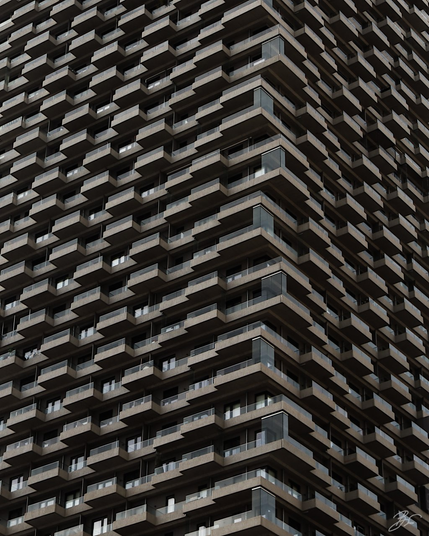#geometricpatterns
20 gorgeous #ArtDecoDoors that could win over even the most #ModernDesign fan https://zorz.it/PzQSn | #SaumyaRatan #art #ArtisticDoors #GeometricPatterns #BeautifulDoors #ArtDeco #CreativeDoors #VibrantColors #masterpieces #ArtisticStyle
#ai #aiArt #aiArtWork #ceramicart #buffalo #gzhel #africanart #hyperrealism #wildlifeart #meadow #wildflowers #afternoonlight #8k #realism #magicalatmosphere #peaceful #geometricpatterns #shallowdepthoffield #ai #aiArt #aiArtWork #ceramic #AfricanBuffalo #meadow #geometricPatterns #gzhelStyle #afternoonLight #wildflowers #hyperrealistic #nature #art
A study in repetition and depth: layers of glass and steel forming a hollow in the city’s facade, an experiment with patterns that echo fractals.
#Photography #Architecture #AbstractArt #GeometricPatterns #UrbanArt #FractalInspired #VisualDepth #FacadeDesign #ReflectionArt #UrbanExploration #PhotoArt #MastoArt #CreativeCommons #VisualExperiment
A gently rolling agricultural field of crops, with distinct diagonal and intersecting tractor tire tracks creating a geometric, criss-cross pattern across the entire scene.
#Photo #LandscapePhotography #Minimalism #SolitaryTree #PatternsInNature #Agriculture #GeometricPatterns #NatureAndHuman #FieldArt #Monochrome #SereneLandscapes #TTMO
#ai #aiArt #aiArtWork #fashion #futuristicfashion #runway #latexdress #metallicstyle #hightechdesign #neonlights #glossyrunway #cinematicfashion #ultradetail #highfashion #futuristicstyle #model #geometricpatterns #formfitting #metallicmakeup #fashionaccessories #glamour #modernhairstyle #ai #aiArt #aiArtWork #fashionmodel #runway #futuristicfashion #latexdress #metallicdress #hightechstyle #neonlights #geometricpatterns #highfashion #cinematic #realistic #glossyrunway #boldstyle #formfitting #t
The Fascinating Math Behind the World’s Most Beautiful Circle Patterns
When mathematics and visual art converge, extraordinary patterns emerge that captivate both the analytical and aesthetic mind. At the heart of this intersection lies a deceptively simple formula—y = (x⋅c) % divisions—that transforms a circle into a canvas where numbers perform an elegant ballet of connections, revealing the inherent beauty and structure of modular arithmetic. This mathematical framework, far from being abstract theory confined to textbooks, manifests as stunning visual symphonies that have applications spanning from cryptography to architectural design. The patterns created through this process tell stories about number relationships, symmetry, and the profound interconnectedness underlying mathematical systems.
The Mathematical Foundation
Modular arithmetic, developed by Carl Friedrich Gauss in his 1801 work “Disquisitiones Arithmeticae,” represents a system where numbers “wrap around” upon reaching a certain value—the modulus8. This concept appears in everyday life through the familiar 12-hour clock where 7:00 plus 8 hours becomes 3:00 rather than 15:00. Mathematically expressed as 15 ≡ 3 (mod 12), this simple principle forms the foundation for incredibly complex patterns and applications. Modular arithmetic creates bounded systems where arithmetic operations are constrained within a specific range, forcing results to cycle through predetermined values rather than increasing infinitely.
The visualization technique discussed here leverages this mathematical property to transform abstract number relationships into visible patterns. When we arrange points equally around a circle and connect them according to modular multiplication rules, the resulting web of lines reveals hidden symmetries and structures that change dramatically as parameters shift. These visualizations offer not merely beautiful images but insights into the fundamental nature of number theory and algebraic relationships.
Choreographing the Algorithm
The creation of these circular patterns follows a precise algorithmic framework. We begin with a circle divided into equal segments (the divisions), where each point represents a number from 0 to divisions-1. For each point x on this circle, we calculate its partner y using the formula y = (x⋅c) % divisions, where c is our multiplier coefficient. Lines drawn between these paired points form intricate patterns that evolve as the multiplier changes. This process mirrors similar visualizations where, for example, 100 equally spaced dots on a circle are connected based on multiplication modulo 100, creating distinct patterns as multipliers range from 2 to 514.
The mathematical transformation occurs because the modulo operation (%) ensures results remain within our designated range, effectively “wrapping” numbers back around when they exceed the number of divisions. This constraint forces the system to create repeating patterns rather than expanding outward infinitely. As the multiplier c changes value, these patterns shift from simple geometric forms to complex, fractal-like structures that seem to pulse between order and chaos. The visualization serves as a window into the properties of modular multiplication, displaying how different multipliers generate distinct symmetries and structures.
As the multiplier value shifts, the pattern undergoes a mesmerizing transformation from ordered simplicity to intricate complexity, capturing the viewer’s complete attention in its rhythmic evolution.
The Evolution of Pattern Complexity
The dynamic multiplier c functions as a control parameter that dramatically transforms the resulting patterns. At certain values of c, particularly when it shares common factors with the number of divisions, simple evenly spaced lines appear. As c changes, especially when approaching values relatively prime to the divisions, the patterns evolve into increasingly complex structures. This transformation represents a journey through mathematical space, with each value of c revealing different properties of modular relationships.
When the number of divisions is substantial, such as 100 points on a circle, the evolving patterns become particularly mesmerizing. Beginning with multipliers as low as 2, simple symmetric patterns emerge, but as the multiplier increases—especially when using prime numbers—the complexity escalates dramatically. This progression from simplicity to complexity visually demonstrates how small changes in mathematical parameters can generate vastly different outcomes, highlighting the sensitive dependence characteristic of many mathematical systems.
There’s something exhilarating about witnessing mathematical truth transform into visual beauty, connecting abstract theory to tangible experience in a single moment.
From Mathematical Theory to Visual Art
These circular modular visualizations bridge abstract mathematics and tangible art, transforming numerical relationships into visual experiences that appeal to both mathematical minds and artistic sensibilities. The patterns created through this technique aren’t mere mathematical curiosities but serve as examples of generative art—where simple rules yield complex, emergent behavior. The appeal lies in how fundamental mathematical principles produce unexpected visual richness when iterated across many points.
Computational and generative design fields have embraced modular arithmetic as an essential mathematical concept for creating repeating patterns, managing cyclic behaviors, and implementing wrapping effects. These applications extend beyond theoretical interest into practical design tools used in architectural facades, textile patterns, and digital interfaces. The circular visualizations serve as both educational models for understanding modular arithmetic and inspirational starting points for artistic exploration.
Applications Across Diverse Fields
The significance of these modular patterns extends far beyond their visual appeal, influencing numerous disciplines through their mathematical underpinnings. In cryptography, modular arithmetic provides the foundation for public key systems such as RSA and Diffie-Hellman, as well as various symmetric key algorithms including Advanced Encryption Standard (AES). The visualization of modular operations offers intuitive insights into the mathematical structures that secure digital communications.
Architectural and computational design fields have embraced these mathematical patterns to create organic structures and repeating elements that balance aesthetic appeal with functional requirements. For instance, brick façade designs use modular arithmetic to manage complex patterns, creating repeating systems that optimize features like shading while maintaining constructability. These applications demonstrate how mathematical visualization translates into practical design solutions addressing real-world challenges.
Music theory also finds connections with these circular representations, particularly when the number of divisions matches significant musical structures. With 12 divisions representing the 12 semitones in Western music, certain multiplier values generate patterns that align with established musical relationships like the circle of fifths. This cross-disciplinary application highlights how the same mathematical principles that create visual patterns also underlie harmonic structures in music, revealing deep connections between seemingly disparate fields.
Educational Dimensions and Accessibility
The visualization of modular arithmetic transforms abstract mathematical concepts into tangible experiences, making them more accessible to learners across different backgrounds. Interactive models allow students to manipulate parameters and immediately observe the resulting changes, creating powerful learning opportunities that connect algebraic formulas with geometric understanding. This approach has proven particularly effective for teaching modular arithmetic, making complex mathematical ideas more intuitive through visual representation.
Educational tools leveraging these visualizations include interactive applications like the Desmos calculator mentioned in one of the Mathematical Visual Proofs videos, which allows users to experiment with different modular multiplications and instantly see the resulting patterns. Similar approaches appear in the Wolfram Demonstrations Project, which creates “operation tables” for modular arithmetic where different values are represented by colors, providing another visual dimension to understanding these mathematical relationships.
The accessibility of these tools democratizes mathematical exploration, allowing anyone with curiosity to investigate complex number theory concepts without requiring advanced mathematical training. Through simple adjustments to parameters like the multiplier or number of divisions, users can discover mathematical insights through observation and experimentation, potentially developing intuition that precedes formal understanding.
10 Essential Mathematical Concepts for Computational and Generative Design
Creating Your Own Mathematical Visualizations
The beauty of these modular patterns lies partly in their accessibility to creation. With minimal resources, anyone can generate these mathematical visualizations and explore their properties. The simplest approach involves drawing a circle with evenly spaced points (representing numbers), selecting a multiplier, and connecting each point to its modular product. For example, with 30 points and multiplier 7, each point x connects to position (x⋅7) % 30, creating a unique pattern.
For those inclined toward digital exploration, programming languages like Python provide excellent tools for creating computational art based on mathematical rules. Python’s readability and capabilities for numerical calculations make it particularly well-suited for generating and visualizing these patterns. Code libraries specifically designed for mathematical visualization, such as manim (used in the Mathematical Visual Proofs videos), offer powerful frameworks for animating how these patterns evolve as parameters change.
Online interactive tools further simplify exploration, with applications like the Desmos calculator allowing users to manipulate modular arithmetic parameters and instantly visualize results without programming knowledge. These accessible entry points enable both mathematical novices and experts to investigate the rich landscape of patterns emerging from simple modular operations.
The Broader Significance in Contemporary Context
As digital technology continues transforming creative fields, mathematical visualizations like modular arithmetic patterns provide an important intersection between computation and aesthetics. These visualizations demonstrate how algorithms can generate beauty while simultaneously conveying mathematical truth—a combination increasingly relevant in a world where computational design influences everything from architectural facades to digital interfaces.
EXPLORING BEAUTY THROUGH ALGORITHM
MATHEMATICAL VISUALIZATIONS
The growing field of generative art, which creates complex visual experiences through algorithmic rules, draws significantly from mathematical foundations like those explored in modular arithmetic visualizations. As artists and designers increasingly incorporate computational approaches into their work, understanding the mathematical principles behind pattern generation becomes valuable across creative disciplines. These circular patterns serve as particularly accessible entry points into algorithmic thinking, demonstrating how simple rules can generate rich complexity.
In educational contexts, these visualizations address the challenge of making abstract mathematical concepts tangible and engaging. By transforming equations into visual experiences, they create alternative pathways to mathematical understanding that complement traditional algebraic approaches. This visual dimension proves especially valuable for learners who struggle with purely symbolic representations, potentially broadening participation in mathematical exploration.
Conclusion
The circular visualizations of modular arithmetic reveal mathematics not merely as a system of abstract symbols but as a generator of visual harmony and complexity. Through the simple formula y = (x⋅c) % divisions, we witness how fundamental mathematical operations produce stunning visual patterns that bridge art and science. These patterns offer windows into the structural beauty inherent in mathematical relationships while simultaneously serving practical applications across diverse fields.
As tools for creating these visualizations become increasingly accessible, more people can participate in this mathematical exploration regardless of formal training. This democratization of mathematical creativity represents an important development in how we engage with mathematical concepts, potentially transforming perceptions of mathematics from an abstract discipline to a source of both intellectual and aesthetic discovery. The hidden dance of numbers, made visible through these circular patterns, invites us all to witness the profound beauty embedded within mathematical structures that underlie so much of our world.
The journey from simple formula to complex pattern mirrors broader principles of emergence across mathematics and nature—how local interactions following simple rules can generate unexpected global structures. In this way, the visualization of modular arithmetic offers not just beautiful images but profound insights into the organizing principles that shape both mathematical systems and the natural world.
2025: The Mathematics Behind a Fascinating Year | LinkedIn
#AlgorithmicDesign #CircleGeometry #CreativeCoding #GeometricPatterns #MathVisualization #VisualNumberTheory
* Does best Bubbles impression * if you are looking for some pretty little kitty patterns for your shed, head on over to my store and get yourself some items to make your own kitty land love centre.
Available in a variety of colorways
#spoonflower
https://www.spoonflower.com/profiles/pine_blue_design
#redbubble https://www.redbubble.com/people/pinebluedesign/shop
#HomeDecor #InteriorDesign #cats
#GeometricPatterns #StylishHome
#patternLovers #ModernDesign #DecorInspiration #mastocats
#HomeStyle #kitty
#ColorfulDecor #catsofmastodon
Enhance Your Designs with IconAdda’s Free Geometry Icons
#GeometryIcons #GeometricDesign #AbstractIcons #MinimalistIcons #ShapeArt #VectorGeometry #ModernIcons #CreativeShapes #SymmetryInDesign #GeometricPatterns #LineArtIcons #FlatDesign #AbstractVectors #GeometricElements #PrecisionDesign #DesignWithShapes #IconPack #DigitalGeometry #StructuredDesign #CleanAndModern
Discover beautiful Glacial Mandalas tapestries on featuring intricate designs inspired by icy landscapes and geometric patterns. Perfect for a unique touch to your home decor! Link: RedBubble #Redbubble #art #mandala #tapestry #homedecor #natureinspired #geometricpatterns
Giclée Art Print* limited edition. White 100% cotton artists’ paper: Hahnemühle Photo Rag, 308 gsm.
https://shop.dutches.gallery/products/tateru_02
.
#giclee #artprint #pattern #dutches #dutchdesign #patternlove #patterndesigner #graphicpattern #zutphen #geometricpatterns #printpattern #interiordesign #DigitalArt #art #ArtistsOnMastodon
Monochrome Heights
#photography
#ttartisan
#ttartisan35mmf14
#BlackAndWhiteArchitecture #MonochromePhotography #UrbanGeometry #ArchitecturalDesign #ModernArchitecture #HighRiseBuilding #GeometricPatterns #Cityscapes #SkylineShot #MinimalistArchitecture #FacadeDetails #ShadowsAndLight #ArchitecturalPhotography #UrbanAbstraction #ArchitectureLovers #BuildingDesign #ArchitecturalLines #ModernAesthetics #SkywardPerspective #CreativeArchitecture
1989 Abstract Artwork with Dynamic Patterns
The image presented appears to be a piece of abstract art, characterized by vibrant colors and dynamic patterns that intersect the frame in various directions. The composition is visually striking, using bright yellows, reds, blues, and whites against darker backgrounds.
https://nocontext.loener.nl/fullpage/11-November1989-Page-096.png
#photography #illustration #madman #nocontext #sfw #abstract #geometricpatterns #vibrantcolors #dynamicdesign
A Maze of Windows and Balconies
#architecturephotography #modernarchitecture #facade #geometricpatterns #buildingdesign #urbanphotography #architecturelovers #repetition #minimalarchitecture #cityscape #highrisearchitecture #modernbuilding #abstractarchitecture #symmetry #balconyview #architecturaldetails #patternphotography #linesandangles #urbangeometry #archilovers
#ArtAdventCalendar Day 12
I have some #aviation themed patterns for sale on #spoonflower https://www.spoonflower.com/collections/760192-av-geek-by-pine_blue_design
and #redbubble https://www.redbubble.com/people/pinebluedesign/shop?artistUserName=pinebluedesign&collections=3781683&iaCode=all-departments&sortOrder=relevant
They would make great stocking stuffers for any #avgeek 💜
#AviationDesign #AviationArt #PatternDesign #SurfacePatternDesign #TextileDesign #PilotLife #ArestiCharts #LozengePrint #AviationHistory #VintageAviation #AviationInspiration #GeometricPatterns #DesignLovers #HomeDecor #AviationGiftIdeas #CreativePatterns #AviationLifestyle

